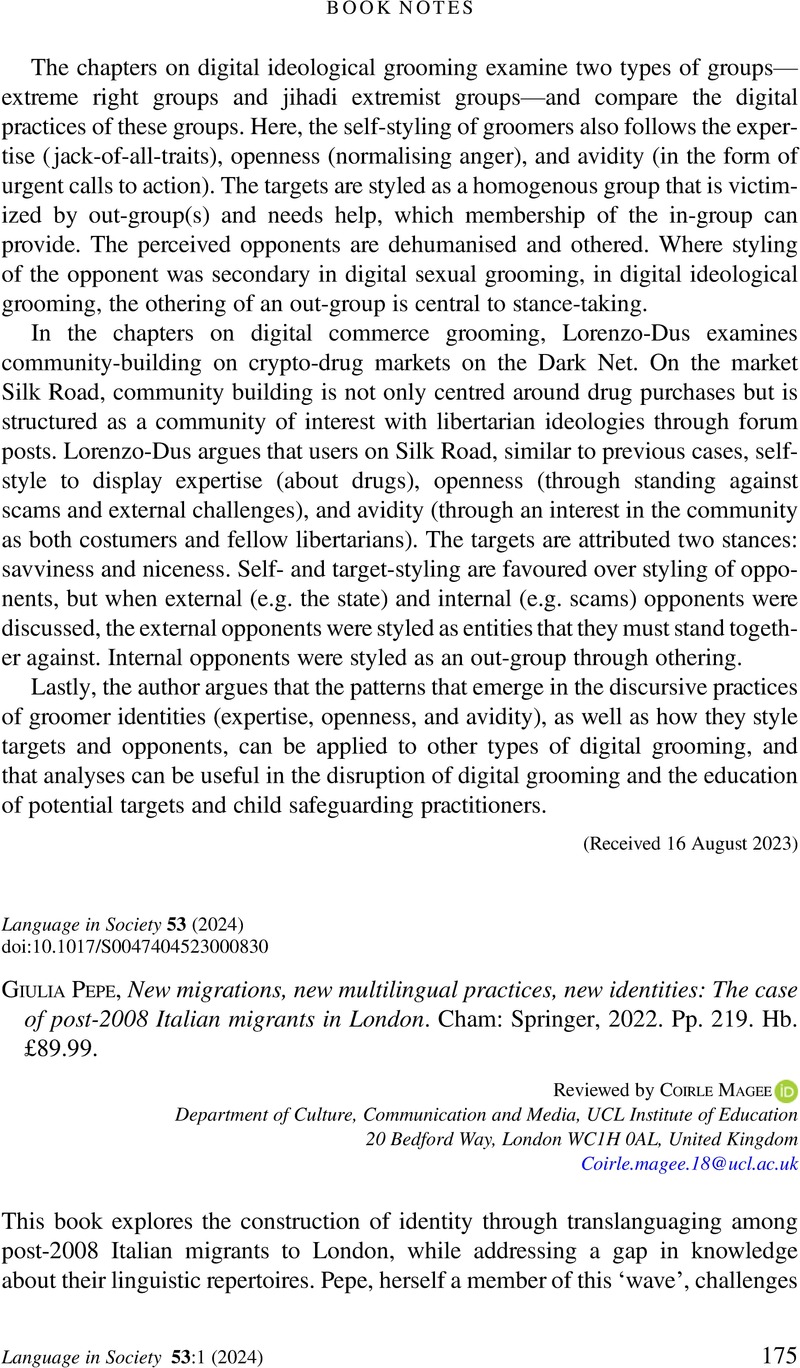No CrossRef data available.
Article contents
Giulia Pepe, New migrations, new multilingual practices, new identities: The case of post-2008 Italian migrants in London. Cham: Springer, 2022. Pp. 219. Hb. £89.99.
Review products
Giulia Pepe, New migrations, new multilingual practices, new identities: The case of post-2008 Italian migrants in London. Cham: Springer, 2022. Pp. 219. Hb. £89.99.
Published online by Cambridge University Press: 01 February 2024
Abstract
An abstract is not available for this content so a preview has been provided. Please use the Get access link above for information on how to access this content.

- Type
- Book Notes
- Information
- Copyright
- Copyright © The Author(s), 2024. Published by Cambridge University Press



